Article contents
‘Imagery of the Elsewhere” Two Choral Odes of Euripides1
Published online by Cambridge University Press: 11 February 2009
Extract
In this paper I approach the relationship between one kind of choral ode and its play, through an analysis of two stasima and less detailed reference to their respective plays. The two odes, Hipp. 732–75 and Hel. 1451–1511, share the theme which has provoked comment on Euripides' use of ‘escapism’ to counteract the supposed reality of his tragedies. I prefer to see the escape-form as a reassertion of the themes and problems of the play in a different and distant context, and to suggest that even in the ‘elsewhere’ of lyric song the dark features of life that mark the drama are not to be escaped. The winged boat in the Hippolytus, for instance, is parallel in the ode to the winged bird, symbol and vehicle of escape, but it is also the ship whose journey initiates the disaster of the play.
- Type
- Research Article
- Information
- Copyright
- Copyright © The Classical Association 1974
References
page 228 note 1 Opinion is divided over the point of comparison in this image: do the wings represent oars or sails? Here, as at Lyc. Alex. 25, the white colour might suggest sails, but Tzetzes there observes 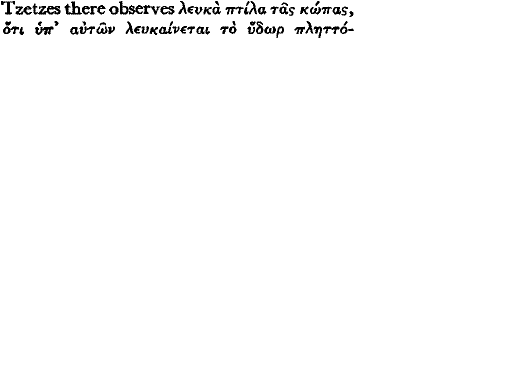 At E. Hel. 147
At E. Hel. 147 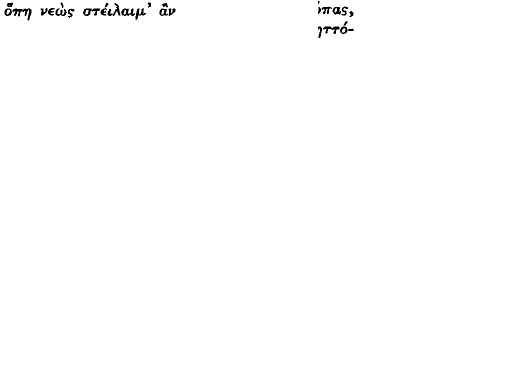 the adjective
the adjective 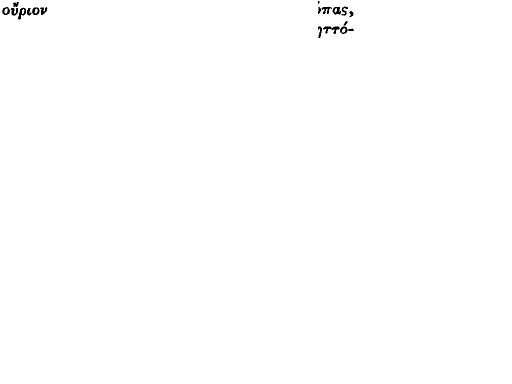 and the singular
and the singular 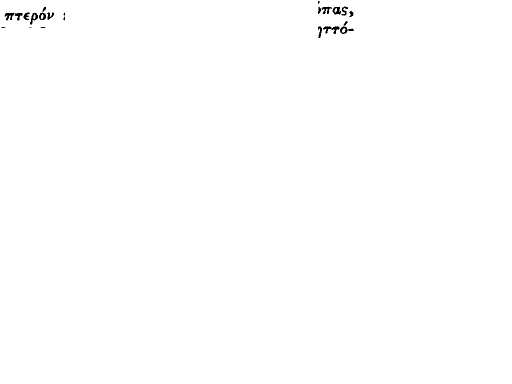 again suggest the sail (see Gow, C.Q. xi [1917], 117), as does
again suggest the sail (see Gow, C.Q. xi [1917], 117), as does 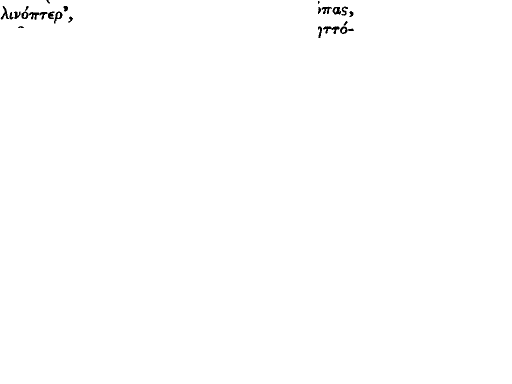 , A. P.V. 468. But explicit evidence favours oars, e.g. Hom. Od. 11. 125, App. Epigr. 204; this is reflected in Latin usage in which the comparison is often restricted to oars (e.g. V. Aen. 1. 300, Prop. 4. 6. 47). (I do not take Arist. de incessu anim. 10 to be irrefutable evidence, but it again favours the primacy of oars: see Tarn, Ancient Ships, p. 20). Some neutral material has been used as evidence for both sides, e.g. E. Tro. 1085 or Hes. Erg. 628 where Sinclair follows Gow in suggesting that
, A. P.V. 468. But explicit evidence favours oars, e.g. Hom. Od. 11. 125, App. Epigr. 204; this is reflected in Latin usage in which the comparison is often restricted to oars (e.g. V. Aen. 1. 300, Prop. 4. 6. 47). (I do not take Arist. de incessu anim. 10 to be irrefutable evidence, but it again favours the primacy of oars: see Tarn, Ancient Ships, p. 20). Some neutral material has been used as evidence for both sides, e.g. E. Tro. 1085 or Hes. Erg. 628 where Sinclair follows Gow in suggesting that 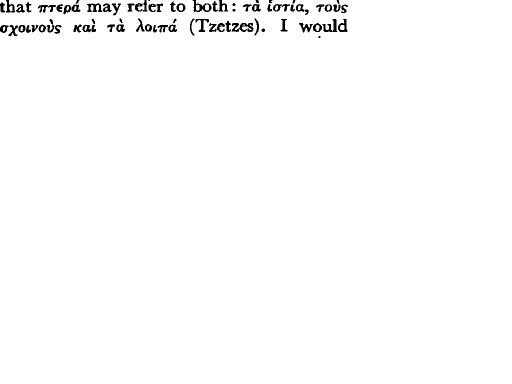 may refer to both: (Tzetzes). I would refer to the earliest explicit comparison, Od. 11. 125, and suggest that the metaphor began as a comparison to oars, but that the possibility of its extension to the sail is often exploited in later, inexplicit, use of the image. The converse, an image describing the movement of birds (and once a tortoise swimming), also suggests the primacy of oars:
may refer to both: (Tzetzes). I would refer to the earliest explicit comparison, Od. 11. 125, and suggest that the metaphor began as a comparison to oars, but that the possibility of its extension to the sail is often exploited in later, inexplicit, use of the image. The converse, an image describing the movement of birds (and once a tortoise swimming), also suggests the primacy of oars: 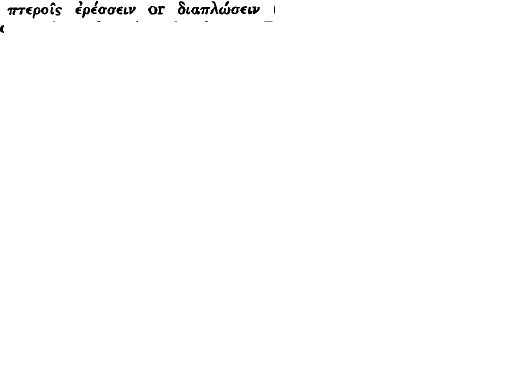 (see Gow, loc. cit., who cites A. Ag. 52, Page on E. Med. 1; cf. Morrison and Williams, Ancient Oared Ships, pp. 195–6). In this passage the image borrows extra vitality from the parallel with the birds whose wings are emphasized at the beginning of the ode,
(see Gow, loc. cit., who cites A. Ag. 52, Page on E. Med. 1; cf. Morrison and Williams, Ancient Oared Ships, pp. 195–6). In this passage the image borrows extra vitality from the parallel with the birds whose wings are emphasized at the beginning of the ode, 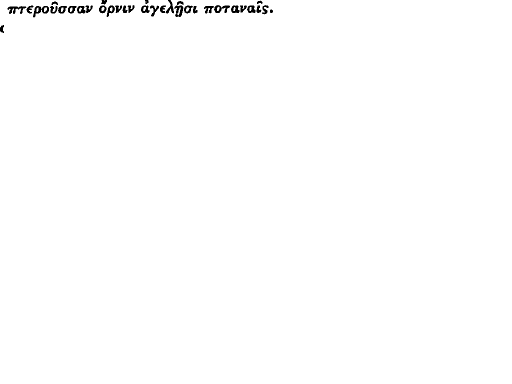 .
.
page 229 note 1 Barrett follows the scholiast in taking the subject of 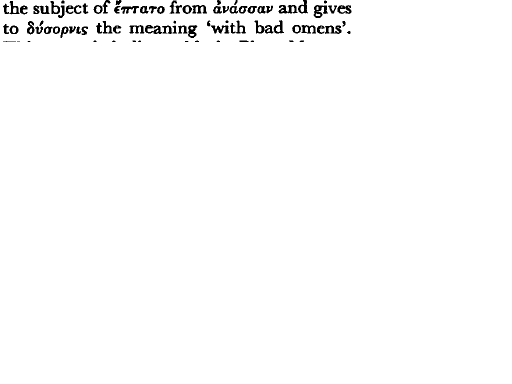 from and gives to the meaning ‘with bad omens’. This sense is indisputable in Plut. Marc. 4, but the more natural meaning ‘ill-omened’ or ‘acting as a bird of ill-omen’ is almost certain at A. Sept. 838 (the only other appearance of the word), as Groeneboom saw, citing our passage as a parallel. Barrett's meaning facilitates his explanation of
from and gives to the meaning ‘with bad omens’. This sense is indisputable in Plut. Marc. 4, but the more natural meaning ‘ill-omened’ or ‘acting as a bird of ill-omen’ is almost certain at A. Sept. 838 (the only other appearance of the word), as Groeneboom saw, citing our passage as a parallel. Barrett's meaning facilitates his explanation of 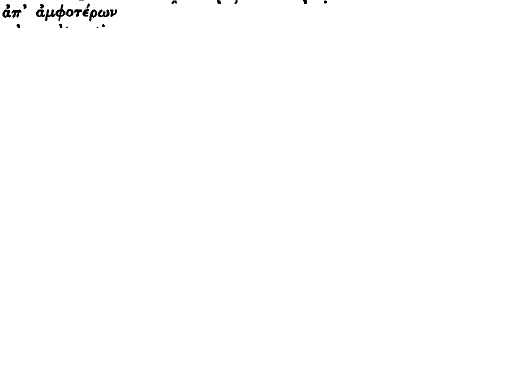 but this explanation does involve alteration of the text to create proper disjunction between Crete and Athens. The sense of
but this explanation does involve alteration of the text to create proper disjunction between Crete and Athens. The sense of 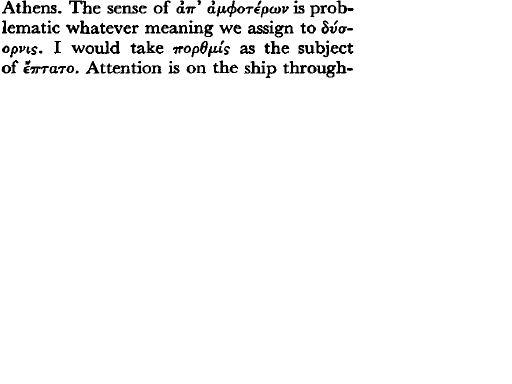 is problematic whatever meaning we assign to. I would take as the subject of. Attention is on the ship throughout the strophe; Phaedra's actions begin in the antistrophe. The flying image is confined to the ship and is maintained through the strophe; the sailor's action at the end of the strophe, the tying of the boat to the shore, ends the movements of the boat. (The verb, naturally enough, is rarely used of people: Euripides uses it of smoke, Ion 40, of lightning, Ba. 90, and of Zeus only in the shape of a swan, Hel. 18. The compound
is problematic whatever meaning we assign to. I would take as the subject of. Attention is on the ship throughout the strophe; Phaedra's actions begin in the antistrophe. The flying image is confined to the ship and is maintained through the strophe; the sailor's action at the end of the strophe, the tying of the boat to the shore, ends the movements of the boat. (The verb, naturally enough, is rarely used of people: Euripides uses it of smoke, Ion 40, of lightning, Ba. 90, and of Zeus only in the shape of a swan, Hel. 18. The compound 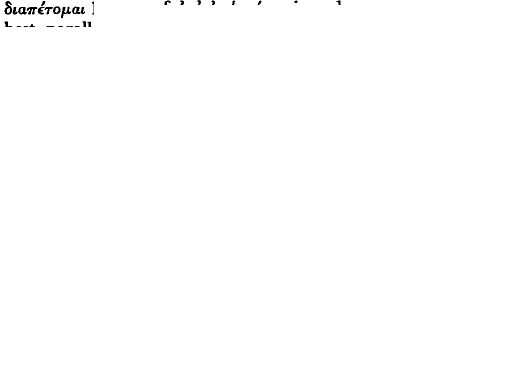 he uses for the Argo, Med. 1, the best parallel for our passage, though the image there is not maintained.)
he uses for the Argo, Med. 1, the best parallel for our passage, though the image there is not maintained.)
page 229 note 2 It is hard to evaluate the difference between 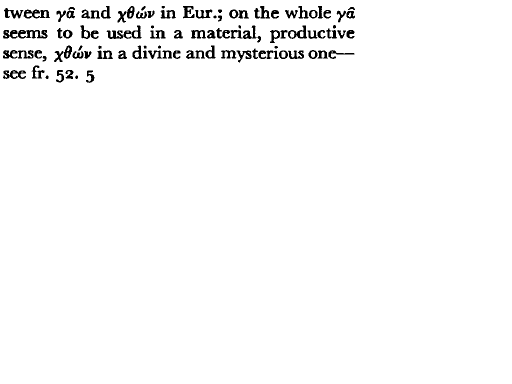 and in Eur.; on the whole seems to be used in a material, productive sense, in a divine and mysterious one—see fr. 52. 5
and in Eur.; on the whole seems to be used in a material, productive sense, in a divine and mysterious one—see fr. 52. 5
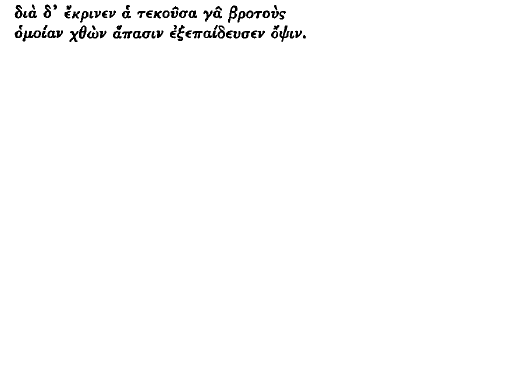
For the visit of Earth to the wedding and her present to Hera of the golden apple tree see Pherecyd. F.G.H. 3 F 16a, cit. Barrett on Hipp. 742, 749.
page 229 note 3 For mortal maidens mourning Hippolytus see below, p. 235. Later tradition included mortals in the mourning for Phaethon (Diggle, Phaethon, pp. 28 f.). For the setting of mythical paradise in the West see Bacon, J. R., Voyage of the Argonauts, pp. 97–8.Google Scholar
page 229 note 4 This would apply equally with Barrett's exempli gratia suggestion,  .
.
page 230 note 1  : ‘any place which
: ‘any place which  you’ (Barrett). It is used of the home of the dead,
you’ (Barrett). It is used of the home of the dead,  E. Hec. 1. Here it links the flying fantasy with the traditional alternative escape route below the ground. The list of Euripides' use of the double-escape fantasy is given by Barrett on Hipp. 1290–3. Of the two routes, the wish to hide by diving below the earth is perhaps the older, see Hom. 11 8. 15, 6. 282, and is more easily fulfilled in symbolic gesture, covering the head in grief or shame, e.g. H. F. 1198 f.; compare Oedipus' wish for a retreat inaccessible to attack through any of the senses (O. T. 1386–90) which precedes his request
E. Hec. 1. Here it links the flying fantasy with the traditional alternative escape route below the ground. The list of Euripides' use of the double-escape fantasy is given by Barrett on Hipp. 1290–3. Of the two routes, the wish to hide by diving below the earth is perhaps the older, see Hom. 11 8. 15, 6. 282, and is more easily fulfilled in symbolic gesture, covering the head in grief or shame, e.g. H. F. 1198 f.; compare Oedipus' wish for a retreat inaccessible to attack through any of the senses (O. T. 1386–90) which precedes his request 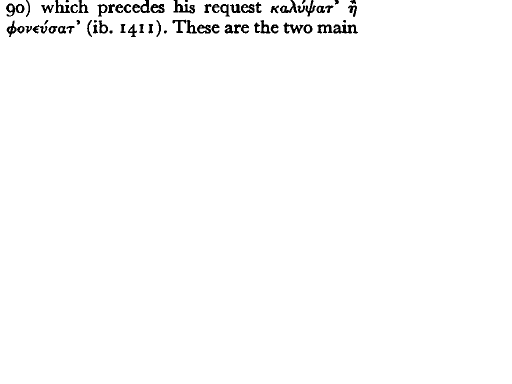 (ib. 1411). These are the two main features in literary treatment of death. The eyes of the dead are closed (Hec. 430), the body covered with a cloth (Hipp. 1459) and then in the earth; the soul flies away (though its course, in Homer at least, is downward, 11. 23. 100,
(ib. 1411). These are the two main features in literary treatment of death. The eyes of the dead are closed (Hec. 430), the body covered with a cloth (Hipp. 1459) and then in the earth; the soul flies away (though its course, in Homer at least, is downward, 11. 23. 100, 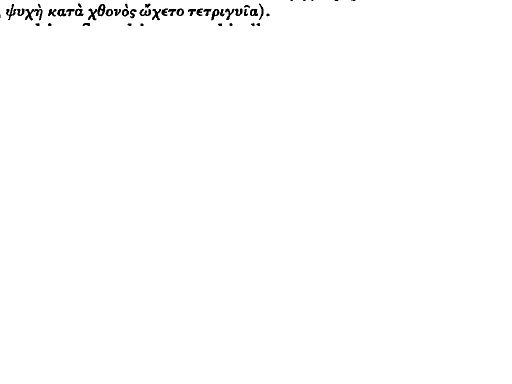 ). The flying soul is reflected iconographically in the tiny winged figures that hover over the heads of the dying on white-ground lekythoi, and perhaps goes back to the possible portrayal of the soul as a butterfly in Bronze Age art, e.g. on the ‘ring of Nestor’ (see Evans, J.H.S. xlv (1925), 1 ff.), which is reclaimed as genuine by J. Sakellarakis, Proc. 3rd Cretolog. Congress (in press). The motif is possibly Cretan in origin; see Tzabella, Proc. 2nd Cret. Congr. i (1968), 263 f. The diversion of the two parts of the dying man becomes schematized: see E. Chrysipp. fr. 833 Dindorf, and Supp. 532 f. (del. Nauck; attributed to Moschion Stob. Fl. 122. 3):
). The flying soul is reflected iconographically in the tiny winged figures that hover over the heads of the dying on white-ground lekythoi, and perhaps goes back to the possible portrayal of the soul as a butterfly in Bronze Age art, e.g. on the ‘ring of Nestor’ (see Evans, J.H.S. xlv (1925), 1 ff.), which is reclaimed as genuine by J. Sakellarakis, Proc. 3rd Cretolog. Congress (in press). The motif is possibly Cretan in origin; see Tzabella, Proc. 2nd Cret. Congr. i (1968), 263 f. The diversion of the two parts of the dying man becomes schematized: see E. Chrysipp. fr. 833 Dindorf, and Supp. 532 f. (del. Nauck; attributed to Moschion Stob. Fl. 122. 3):
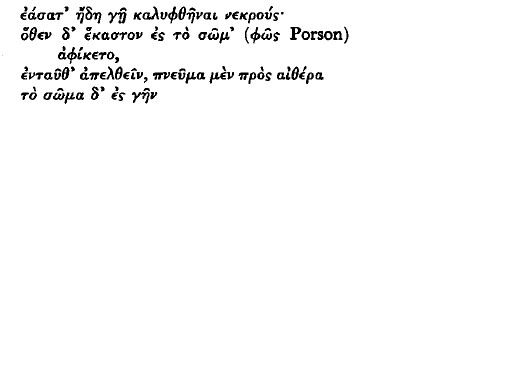
(see Rohde, Psyche, Ch. 12 with 149 n. = pp. 437, 461 in Hillis' 1925 translation). Mythologically the motif may be related to Ouranos and Ge, the two parent figures of whom the mother has the stronger tie with the children (Hes. Th. 45, 106, 147, 154–84) The resonance of this motif in  may set here an ambiguity of tone from the beginning, and suggest that even in the material of the escape-world there is present the element of death and destruction that dominates the end of the ode. Reference to the double-barrelled wish cannot be pressed, but is strong enough to have misled some editors into emendation.
may set here an ambiguity of tone from the beginning, and suggest that even in the material of the escape-world there is present the element of death and destruction that dominates the end of the ode. Reference to the double-barrelled wish cannot be pressed, but is strong enough to have misled some editors into emendation.
page 230 note 2 In the first strophe 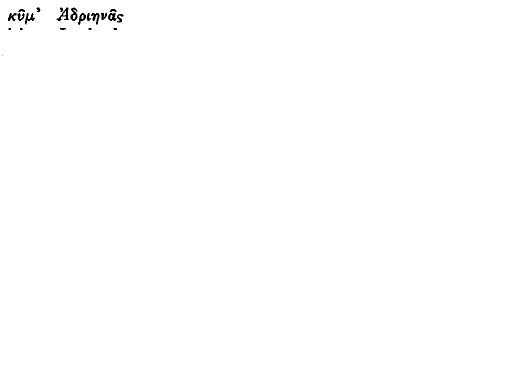 occupies the equivalent position. In both strophes the allusion to a real but distant place acts as a springboard for the movement peculiar to each strophe, away from the world in the first, back in the second.
occupies the equivalent position. In both strophes the allusion to a real but distant place acts as a springboard for the movement peculiar to each strophe, away from the world in the first, back in the second.
page 230 note 3 If Euripides had required a conditional mood, he could have used a form such as 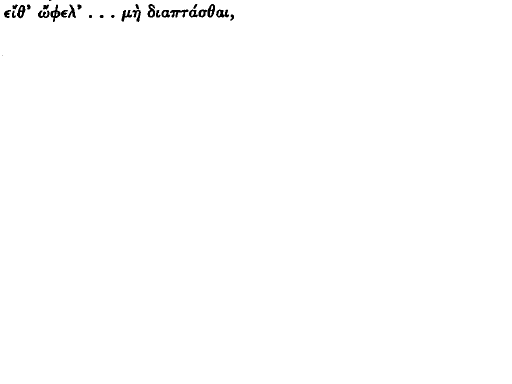 Med. 1.
Med. 1.
page 231 note 1 The use of this particular compound in metaphor is unique (occasionally copied in later prose) though 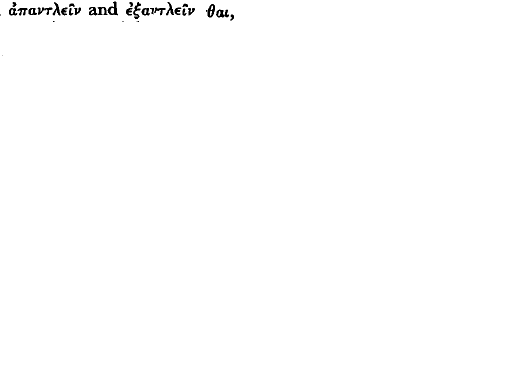 and Euripides uses several times metaphorically e.g. Alc. 354
and Euripides uses several times metaphorically e.g. Alc. 354 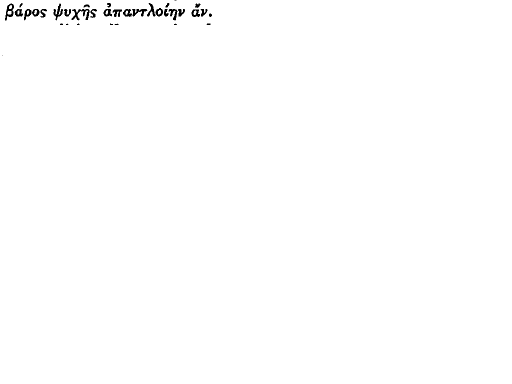 .
.
page 231 note 2 As they are traditionally associated with song (Hes. Th. 275, see West ad loc., H.F. 304  ) their presence might have suggested song even without
) their presence might have suggested song even without  .
.
page 231 note 3 Though the 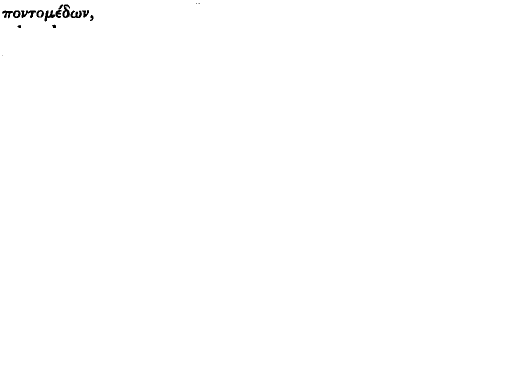 , in forbidding this sea to sailors, already suggests potential hostility.
, in forbidding this sea to sailors, already suggests potential hostility.
page 231 note 4 The picture of a group of women, undisturbed in a domestic task, stands as part of common technique for creating a background atmosphere of stable, habitual peace. This is projected on to the divine world in, e.g., Sirens, nymphs, and personifications (Litae, Horae, etc.). Intrusion into such a group represents peace-breaking: the paradigm is the rape of Persephone (H.h. Dem. 5–15). Odysseus' meeting with Nausicaa, Od. 6. 85–138, presents the scene from the viewpoint of the intruder. Clothes, flowers, and water are prominent elements in the scene, which is normally centred round the domestic task and/or relaxation after it. The intrusive agent may be human or divine, and may simply appear as an unwelcome noise: Andromache among her handmaidens, weaving and preparing baths for Hector, hears the laments for his death, Il. 22. 440–8. (Cf. E. Hel. 175–8, Hipp. 121–30, A. P.V. 132–5.) The situation may involve one woman alone, e.g. Creousa gathering flowers for dye before her rape by Apollo, Ion 886 f. Hec. 923–8 describes an individual domestic scene multiplied through the city. The familiarity of this picture gives impact to the unexpectedly peaceful activities of the maenads, Ba. 677–721.
page 232 note 1 Cf. 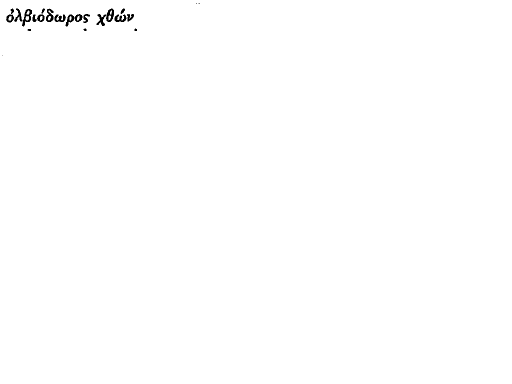 750 (Barrett's text).
750 (Barrett's text).
page 232 note 2 Persephone plays with the daughters of Oceanus, H.h. Dem. 5–15.
page 233 note 1 For aggressive, military imagery of love see Anacr. 48. 75; Ibyc. 1. 11; A. Ag. 743, 1478; S. Ant. 781  E. Hipp. 39, 392 and fr. 250
E. Hipp. 39, 392 and fr. 250 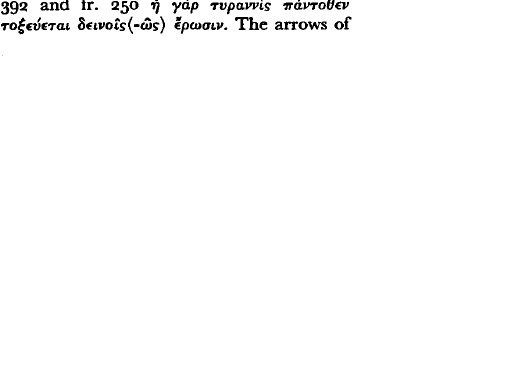 . The arrows of Eros belong to this body of imagery, and so may Aphrodite's liaison with Ares: Simonides (schol. Ap. Rh. 3. 26) and others call Eros their son.
. The arrows of Eros belong to this body of imagery, and so may Aphrodite's liaison with Ares: Simonides (schol. Ap. Rh. 3. 26) and others call Eros their son.
page 233 note 2 Love belongs with wine and song (e.g. Anacr. 116) as one of the pleasures, often described as 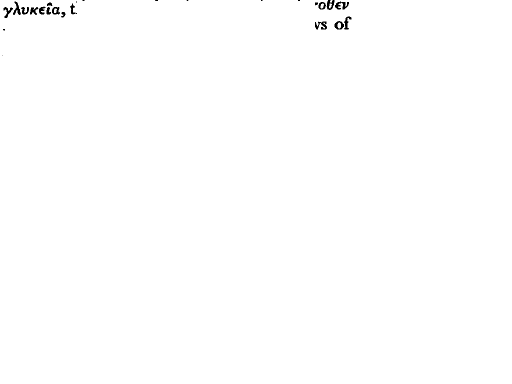 , that help man forget his cares.
, that help man forget his cares.
page 233 note 3 Aphrodite reveals in the prologue the more ruthless side of divinity, for the prologue itself describes the same changing treatment of the gods: from the picture of secluded, ideal creatures to the agents of human destruction. It begins with reference to the farthest edge of the world:.
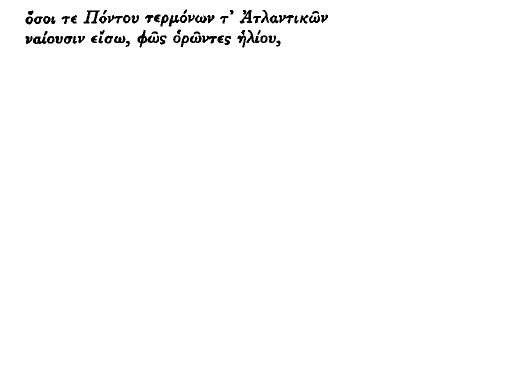
and Aphrodite lives  : the first mention of the gods in the play involves their right to honour, the honours paid to them, and their reaction,
: the first mention of the gods in the play involves their right to honour, the honours paid to them, and their reaction, 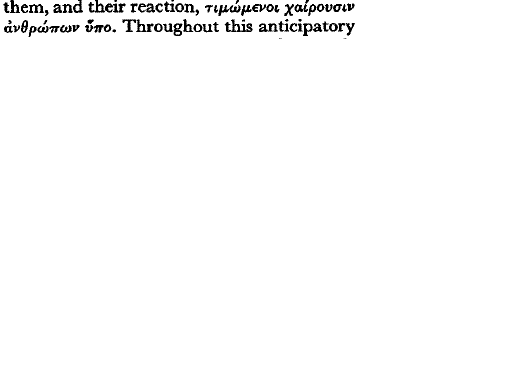 . Throughout this anticipatory synopsis the dangerous qualities of the gods are progressively revealed. Phaedra must undergo mental agony (expressed in terms of physical destruction, 38–9,
. Throughout this anticipatory synopsis the dangerous qualities of the gods are progressively revealed. Phaedra must undergo mental agony (expressed in terms of physical destruction, 38–9,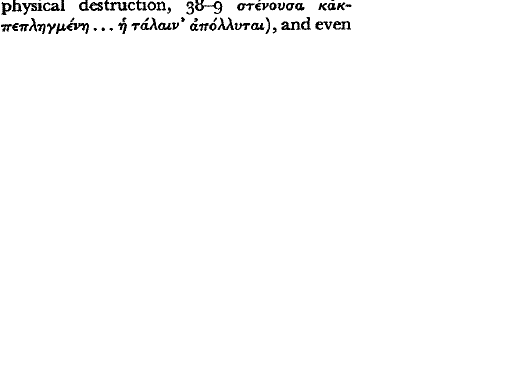 , and even Poseidon's gift,
, and even Poseidon's gift, 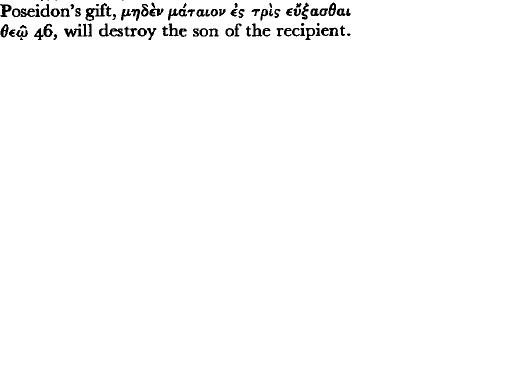 46, will destroy the son of the recipient). Aphrodite in her explanation of the necessity for Phaedra's death, 48 f.:
46, will destroy the son of the recipient). Aphrodite in her explanation of the necessity for Phaedra's death, 48 f.:
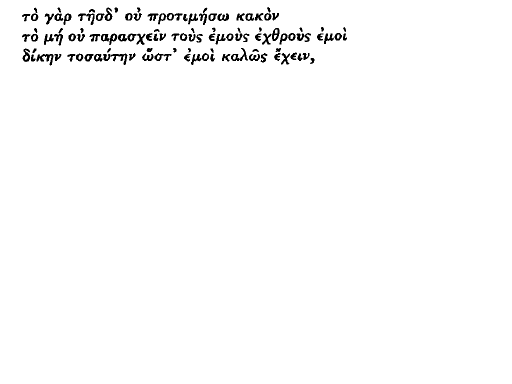
gives us the key to the destructive aspect of the gods: that any relation between gods and men exists for the benefit not of men but of gods. The prologue ends with the gates of Hades opening for Hippolytus, as the play ends with Hippolytus' request to be covered over (1468) and with his death: the prologue, summary of the play, reflects its patterns and preoccupations.
page 234 note 1 The explicit disease image of love is not as common in fifth-century Greek as it became in Latin and English poetry. We find it twice in Sophocles, Tr. 491, and fr. 491. 1 where cod. Paris has 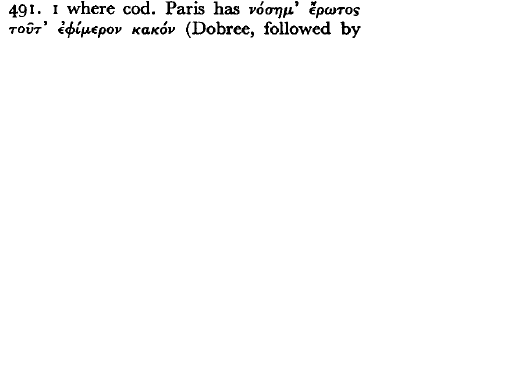 (Dobree, followed by Pearson, thinks
(Dobree, followed by Pearson, thinks  is an interpolated gloss on, e.g.,
is an interpolated gloss on, e.g., 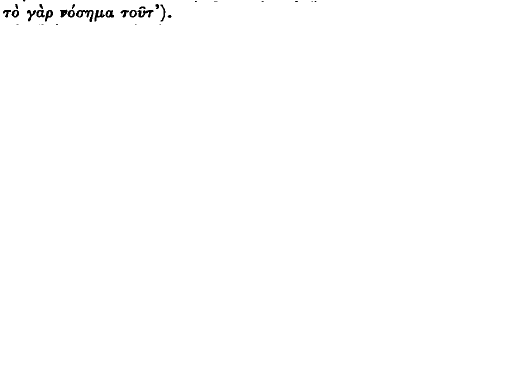 E. fr. 400
E. fr. 400 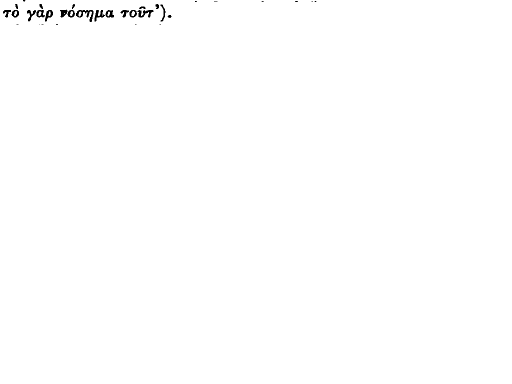 is a better parallel; cf. Theocr). Idyll 30. 1
is a better parallel; cf. Theocr). Idyll 30. 1 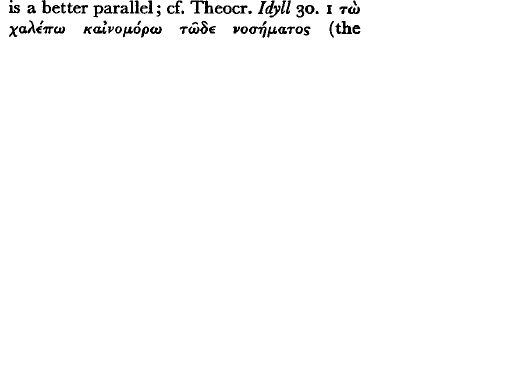 (the image changes to
(the image changes to  ibid. 10) and 2. 85; Gow on id. 3. 17 (citing Pease on V. A. 4. 1). Cf. Plat. Symp. 207. (At Plat. Phaedr. 236B
ibid. 10) and 2. 85; Gow on id. 3. 17 (citing Pease on V. A. 4. 1). Cf. Plat. Symp. 207. (At Plat. Phaedr. 236B  seems to mean ‘be badly off in life’, and is not a medical metaphor for lovers.) Here, the unpleasantness of Aphrodite,
seems to mean ‘be badly off in life’, and is not a medical metaphor for lovers.) Here, the unpleasantness of Aphrodite, 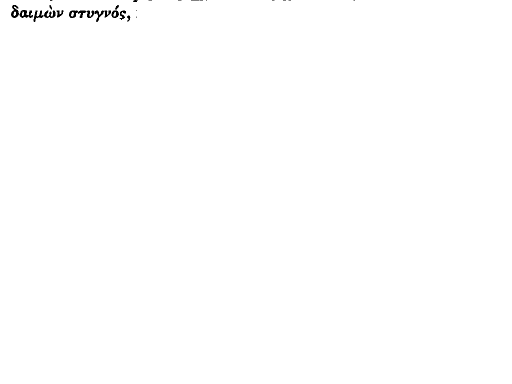 , is compounded by her metaphorical responsibility for physical pain and disease.
, is compounded by her metaphorical responsibility for physical pain and disease.
page 234 note 2 Hippolytus' relation to Artemis can be experienced as a distorted image of the lover-mistress relation as Aphrodite implies, 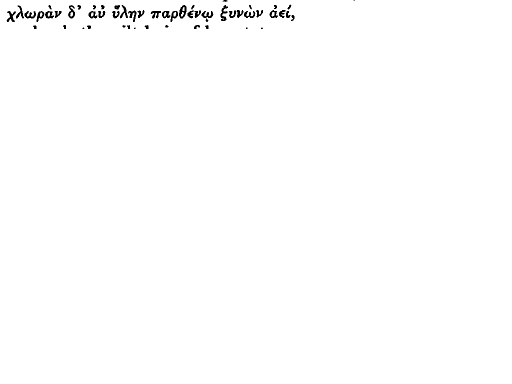 17. He garlands the gilt hair of her statue on stage (see Barrett on 82). For possible erotic associations of garlanded flowers see Sapph. 94. 14 f. (Page compares Anacr. 38), and schol. Ar. Thesm. 401
17. He garlands the gilt hair of her statue on stage (see Barrett on 82). For possible erotic associations of garlanded flowers see Sapph. 94. 14 f. (Page compares Anacr. 38), and schol. Ar. Thesm. 401 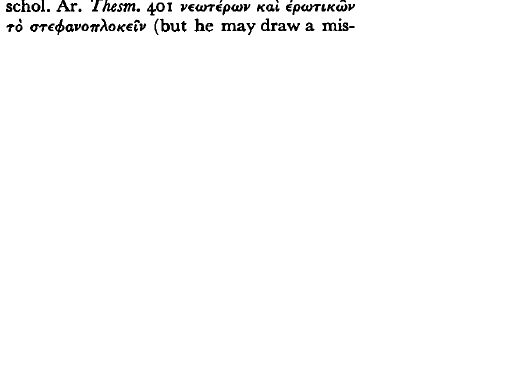 (but he may draw a mistakenly general inference from his text and from Sapph). 67
(but he may draw a mistakenly general inference from his text and from Sapph). 67 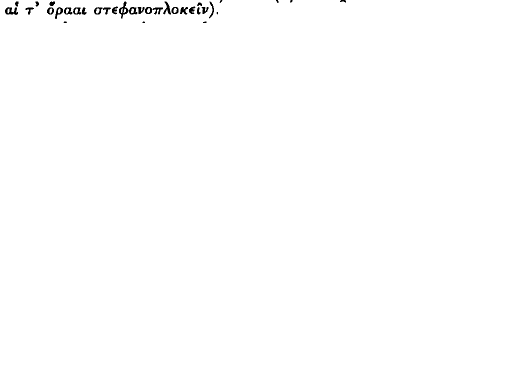 .
.
page 234 note 3 For the forest and mountain as the ‘elsewhere’ locale for escape see Ba. 866 f.; oreibasia, Ba. 863 f., 135 f., and O.T. 1451.
page 234 note 4 Diggle, Phaeth. 4–6, 27–32.
page 236 note 1 For motion and sound as the primary force of  see Diggle, on Phaeth. 80, Morrison and Williams p. 203. Punctuation here, and so the exact sense of the metaphor, is unclear; but the oar is clearly more prominent than the sail.
see Diggle, on Phaeth. 80, Morrison and Williams p. 203. Punctuation here, and so the exact sense of the metaphor, is unclear; but the oar is clearly more prominent than the sail.
page 236 note 2  is Jackson's supplement, Marg. Scaen. 84, which secures responsion for
is Jackson's supplement, Marg. Scaen. 84, which secures responsion for  1476. The ship in Hippolytus is addressed in the same way, with an
1476. The ship in Hippolytus is addressed in the same way, with an  that directs attention to the object without attributing to it any action in a main verb (Barrett on Hipp. 732). In both the address is followed by allusion to the sailors' activity on board.
that directs attention to the object without attributing to it any action in a main verb (Barrett on Hipp. 732). In both the address is followed by allusion to the sailors' activity on board.
page 237 note 1 This is associated with the Spartan picture of the chaste Helen: see Ar. Lys. 1314–15:
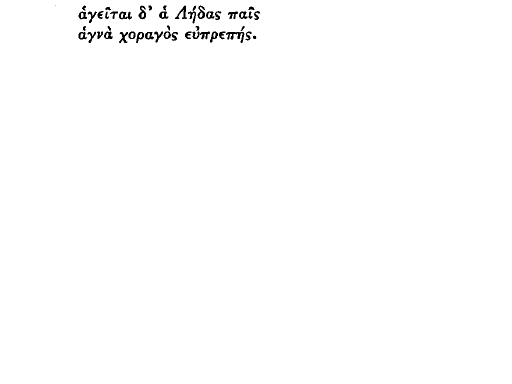
Groups of dancing maidens are characteristically, though not exclusively, Spartan: see Wilam. and Leeuwen on Ar. Lys. 1249. There was a Helen cult there whose priestesses were at one time (Paus. 3. 16. 1) called Leucippides. One explanation of this name is that these were the wives of the Dioscuri and the daughters of a Leucippus (Theoc. 22. 138; Apollod. 3. 11. 2); another relates their name etymologically with their possible cult title  (see Bowra, Gr. Lyr. Poet., p. 53, who cites Ar. Lys. 1308–11). The Helen of this cult may have presided over dances of unmarried girls: Griffiths's material, Q.U.C.C. xiii (1972), 39–43 on Helen as chorus-leader and deity in Sparta, is a valuable by-product of his theory that Alcman's Hagesichora represents Helen. Whether the Leucippides entered the dance is unclear. If they did have the title
(see Bowra, Gr. Lyr. Poet., p. 53, who cites Ar. Lys. 1308–11). The Helen of this cult may have presided over dances of unmarried girls: Griffiths's material, Q.U.C.C. xiii (1972), 39–43 on Helen as chorus-leader and deity in Sparta, is a valuable by-product of his theory that Alcman's Hagesichora represents Helen. Whether the Leucippides entered the dance is unclear. If they did have the title  we can add Alcman's four comparisons of dancing girls to horses (this motif is not confined to Spartan poetry, see Anacr. 84 and 118, E. Ba. 166). We cannot tell how familiar in Athens the Spartan Helen cult and its dances may have been; but once Helen joined the dance she would naturally play a leading part.
we can add Alcman's four comparisons of dancing girls to horses (this motif is not confined to Spartan poetry, see Anacr. 84 and 118, E. Ba. 166). We cannot tell how familiar in Athens the Spartan Helen cult and its dances may have been; but once Helen joined the dance she would naturally play a leading part.
page 237 note 2 Callimachus says that the Pleiades first established dancing in night-festivals (fr. 693P: see Bowra, loc. cit. 53 n. 3); but the phrase Pleiadum choro (e.g. Hor. C. 4. 14. 21) probably arose from application of this metaphor as a kind of epithet, rather than from such a story. Bowra compares E. El. 467; but there the dance of the Nereids is significant, both in itself and as a parallel earlier in the ode, 432. Any deep mythical connexion with night-time festivals is an unnecessary hypothesis; the fact that these stars shine until late at night is enough. It is possible that some unknown Spartan myth may lie behind this material, since the Pleiades are important in some sense in Alcman's ‘Partheneion’: West, C.Q. N.S. xv (1965), 195, thinks the ‘Partheneion’ is sung in daylight, but cf. Griffiths, art. cit. 33 f.
page 237 note 3 The Hyacinthia was known of at Athens from at least 479 B.C. (Hdt. 9. 7. II). It took place inside the sanctuary of Apollo at Amyclae, included dances (Mellink, Hyakinthos, [Utrecht, 1943], pp. 20, 44), gave prominence to women (ibid. 216) and featured maidens racing in two-horse chariots (Polyc. ap. Ath. 4. 1390–F). The Spartan association of maidens with horses in poetry and perhaps cult is apparently maintained in ceremony.
page 238 note 1 The metrical structure they share is ‘a remarkable series of four single cola’ (Dale).
page 238 note 2 Cf. supra, p. 237 n. 3. Even if one disregards on principle (since it is not explicit) the suggestion that allusion is intended to their possible marriage to the Dioscuri, the patronymic form and metrical shape link the two names.
page 239 note 1 For the rarity of this delayed  (and hence its possible affectation?) see Fraenkel, Ag. ii. 282. 2 (and his Addendum iii 829).
(and hence its possible affectation?) see Fraenkel, Ag. ii. 282. 2 (and his Addendum iii 829).
page 239 note 2 Segal, , T.A.P.A. cii (1971) 595, calls the ‘movement of the whole plot … circular and cyclical’. He cites the move from joy to grief in the parodos, and the move from grief to joy in the third stasimon. His vision (p. 609) of Helen as the central figure, with Theonoe and Menelaus as ‘polarities at either end of the spectrum’, also reflects a view of Helen at the centre of some formal structure, either mobile or architectural.Google Scholar
page 239 note 3 She is not told how they died: she feels responsible whether it was in battle or from shame.
page 239 note 4 This is the earliest mention of his death in literature, so we cannot tell whether  alludes to the competition between Apollo and Zephyrus. Archaeological evidence does not help, but the earliest representations of Hyakinthos, in sculpture and on gems, emphasize his relation with Apollo: Zephyrus is absent. It is better to take
alludes to the competition between Apollo and Zephyrus. Archaeological evidence does not help, but the earliest representations of Hyakinthos, in sculpture and on gems, emphasize his relation with Apollo: Zephyrus is absent. It is better to take  as the object of the participle as well as of
as the object of the participle as well as of  . The swift movement of
. The swift movement of 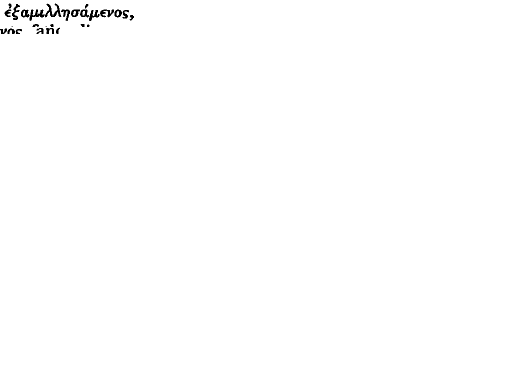 , and the spinning movement of the discus, add to the general effect of circular motion.
, and the spinning movement of the discus, add to the general effect of circular motion.
page 239 note 5 Burnett, Catastrophe Survived, Ch. 7 passim.
page 239 note 6 The phantom is made of sky, 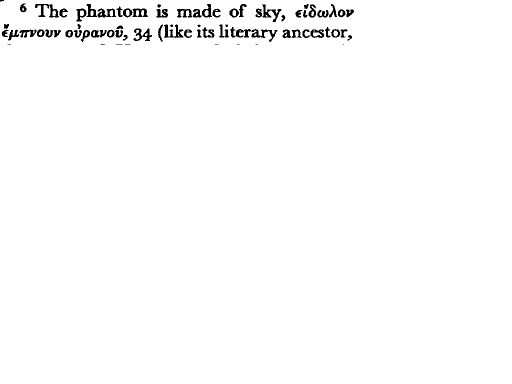 , 34 (like its literary ancestor, the copy of Hera that fooled Ixion, Pi. P. 2. 36), and its deluding effect continues until line 755, well after the report of its disappearance at 605. Air and sky are important in the language of this play, and through the
, 34 (like its literary ancestor, the copy of Hera that fooled Ixion, Pi. P. 2. 36), and its deluding effect continues until line 755, well after the report of its disappearance at 605. Air and sky are important in the language of this play, and through the  are related to the issue of appearance and reality that has preoccupied critics. The eidolon when it leaves moves
are related to the issue of appearance and reality that has preoccupied critics. The eidolon when it leaves moves 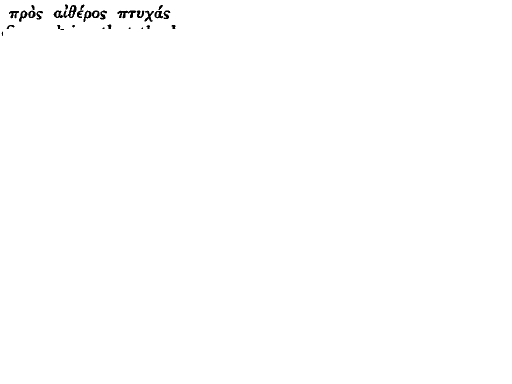 605; Theonoe, 1013–16, explains that the human soul also goes into the aither at death. Air occupies a central position in this stasimon in the first words of the second strophe.
605; Theonoe, 1013–16, explains that the human soul also goes into the aither at death. Air occupies a central position in this stasimon in the first words of the second strophe.
page 240 note 1 Segal, loc. cit. 598.
page 240 note 2 For Galaneia see Segal, p. 599, who stresses Theonoe–s descent from Proteus. Menelaus, detained in Egypt, Horn. Od. 4. 351, is saved by the advice of Eidothea, daughter of Proteus.
page 240 note 3 Segal, p. 600.
page 240 note 4 Cf. the political climate that produced the Helen. News of the Sicilian disaster had reached the Athenians the year before and Decelea had been seized and occupied. The oligarchic revolt broke out a few months after the first performance.
page 240 note 5 Aristotle, Poet. 1456225, does not suggest that Euripides himself used the  . This passage has influenced our approach to Euripidean choral odes: we have assimilated the tone of Aristotle's comparison between Sophocles and Euripides:
. This passage has influenced our approach to Euripidean choral odes: we have assimilated the tone of Aristotle's comparison between Sophocles and Euripides: 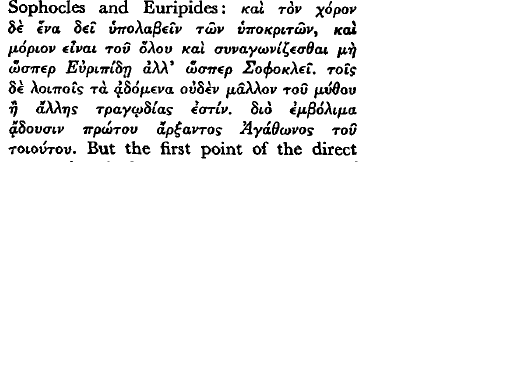 . But the first point of the direct comparison is the persona, not the songs, of the chorus. It is later poets, influenced apparently by Agathon, who abandoned the organic relation between a choral ode and its play. I am glad to see new support for this approach to Euripides' so-called escapism, with comments on the Hippolytus stasimon, in B. Vickers, Towards Greek Tragedy, pp. 18–23.
. But the first point of the direct comparison is the persona, not the songs, of the chorus. It is later poets, influenced apparently by Agathon, who abandoned the organic relation between a choral ode and its play. I am glad to see new support for this approach to Euripides' so-called escapism, with comments on the Hippolytus stasimon, in B. Vickers, Towards Greek Tragedy, pp. 18–23.
- 7
- Cited by




